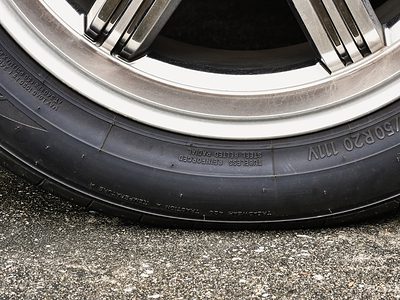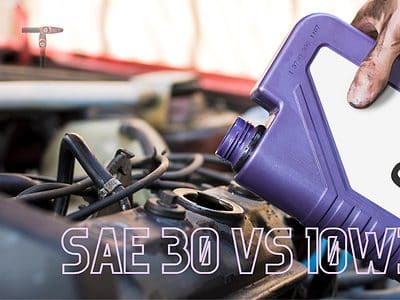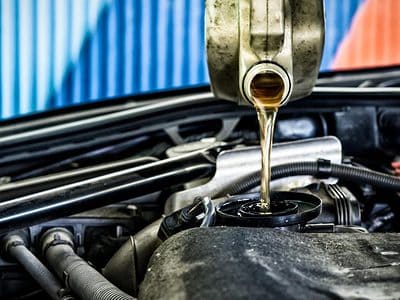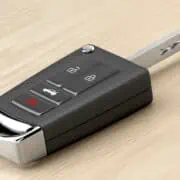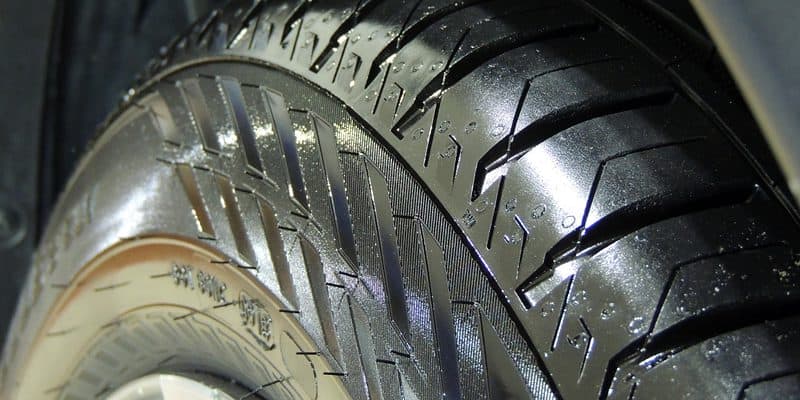
Tires are the unsung heroes of your vehicle, silently supporting you mile after mile as you travel through the roads. But how long do tires last, exactly? These hardworking rubber discs may surprise you.
The average tire lifespan is around 50,000 miles, but it’s normal for them to last much longer with proper care and maintenance.
This article will dive into the ins and outs of tire lifespan, including the factors that impact how long they last, tips to extend your tire lifespan, and understanding when to say goodbye to your old treads and hello to some shiny new ones.
What Are Tires Made Of?
Tires are made up of rubber, steel, and various chemical compounds. The outermost layer of a tire, known as the tread, is made of rubber and is designed to provide traction on the road. It’s also the part that wears down over time.
Beneath the tread, tires have a layer of steel belts that give the tire strength and help it maintain its shape. These steel belts are typically made of steel wire woven or spiraled together.
The innermost layer of a tire is called the liner, and it is made of rubber or another synthetic material. The liner helps to contain the air inside the tire and keep it from escaping.
Tires also contain various chemical compounds, such as carbon black and oils, which help to give them strength and durability. Some tires may also contain unique compounds, such as silica, which can improve their traction in wet or slippery conditions.
Overall, tires are complex engineering structures that are designed to provide a combination of traction, stability, and durability for vehicles.
How Long Do Tires Last?
The average lifespan of a tire is around 50,000 miles, but this can vary depending on the specific type of tire and how it is used. Some tires may last as little as 25,000 miles, while others may last up to 80,000 miles or more.
How does this translate to years?
Assuming you drive an average of 12,000 miles yearly, your tire’s lifespan can range from 4 years at low mileage to over 6.5 years at high mileage. That said, these are just rough estimates—your tires’ lifespan may be shorter or longer depending on various factors (which we’ll get to shortly).
It’s a good idea to check your tires regularly for signs of wear and replace them when they reach the end of their useful life. If you’re unsure how, jump to this article section where we’ve covered that.
Factors That Affect Tire Lifespan
While we’ve given the average tire lifespan above, several factors determine how long your tires will last. Let’s discuss them.
Manufacturer and Tire Type
The type of tire you use can have a significant impact on its lifespan. Performance tires, for example, have softer tread compounds and more aggressive tread patterns, which can lead to faster wear. As a result, they may have shorter lifespans compared to standard or touring tires.
Similarly, summer tires are designed for warm weather and have shorter lifespans than all-season or winter tires. Their softer rubber compounds wear down quickly when exposed to cold temperatures. Meanwhile, all-season and winter tires perform well in a broader range of temperatures and weather conditions, which extends their lifespan.
Driving Conditions
Driving conditions affect the lifespan of your tires. Some things to consider include:
Road surfaces
Tires will wear faster if you drive on rough or abrasive roads than on smooth, well-maintained ones.
Speed
Driving at high speeds tends to wear your tires faster than going at moderate speeds.
Load
Subjecting your tires to heavy loads, especially on large cars or by frequently carrying heavy cargo, wears the tread faster than tires used for lighter loads.
Maintenance
Proper maintenance is crucial for extending your tires’ lifespan. Ensuring adequate air pressure, for example, will ensure even tread wear and prevent damage to the tire’s internal structure.
Similarly, regularly rotating your tires helps to distribute the wear more evenly, and inspecting for signs of wear or damage—bulges, cracks, or uneven tread wear—enables you to find and address issues before they become serious.
Climate and Temperature
Think of what would happen if you put a piece of rubber in a fire or the freezer—apply that to your tire. While the summer sun won’t have the same effect as an open flame, you can bet your tires are taking a beating nonetheless.
So, it’s no surprise that tires exposed to extreme temperatures have shorter lifespans than tires used in more moderate climates. Also, high precipitation levels, like rain and snow, can contribute to tread wear due to the added moisture on the road.
Vehicle Alignment and Suspension
Proper vehicle alignment and suspension affect the lifespan of your tires. If your vehicle’s alignment is off or its suspension is not functioning correctly, it can cause your tires to wear unevenly and potentially lead to premature failure.
Tire Inflation
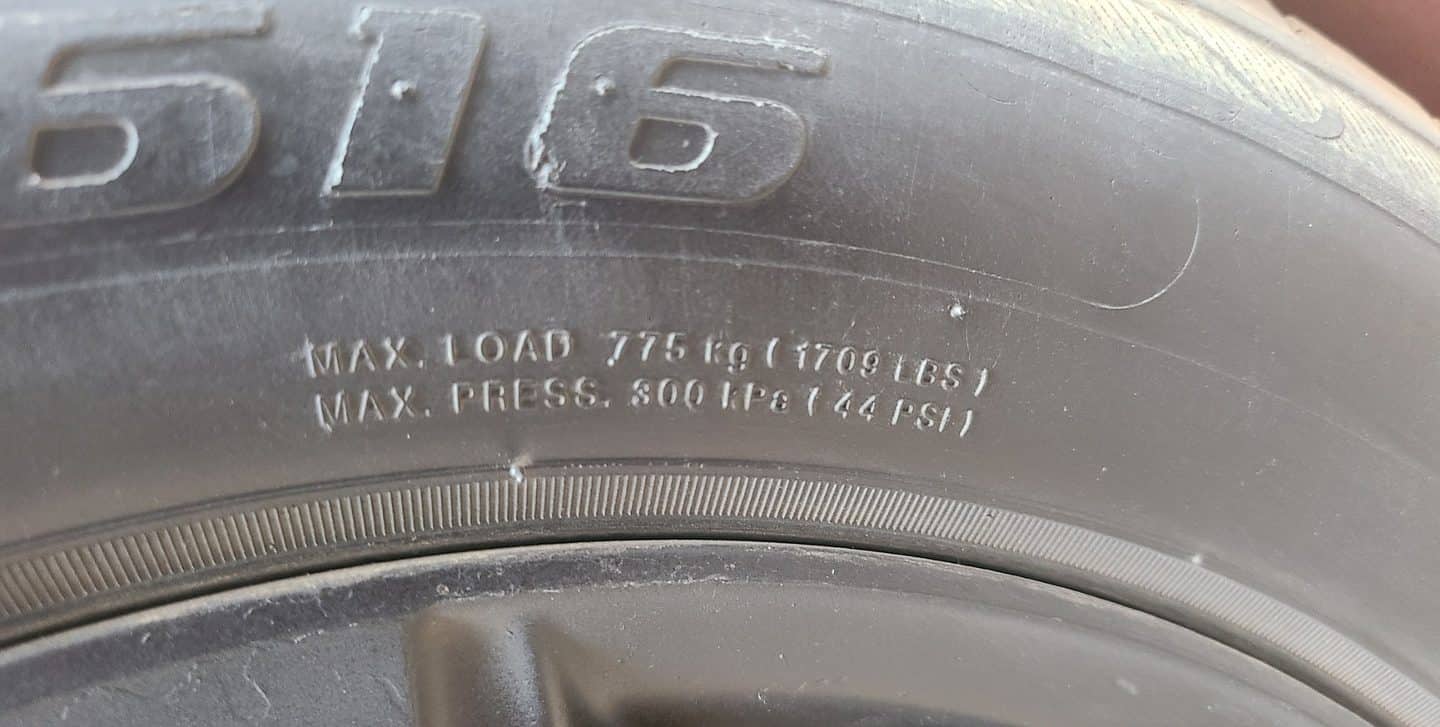
Maintaining the correct air pressure in your tires is vital for several reasons. It ensures even tread wear, improves fuel efficiency, and increases the tire lifespan.
On the other hand, underinflated or overinflated tires can cause uneven tread wear and potentially lead to tire failure.
Driving Habits
Your driving habits also impact the lifespan of your tires. For example, aggressive driving—rapid acceleration and hard braking—puts extra strain on your tires and leads to faster tread wear.
Similarly, overloading your car or towing heavy objects can also put extra strain on your tires and potentially shorten their lifespan.
Vehicle Type and Weight
The type of vehicle you drive, and its weight also has an impact on tire lifespan. Heavier vehicles, such as trucks and SUVs, can put extra strain on tires and potentially shorten their lifespan.
Car weight is not the only contributing factor to tire wear, though. Performance vehicles like sports cars usually have aggressively treaded tires with more patterns and softer tread compounds, which can lead to faster tread wear.
Tire Storage and Handling
If you’ve got a couple of extra tires at home, it’s important to store and handle them properly. For starters, you want to keep them in a cool, dry place to prevent damage from exposure to heat and moisture.
You also want to handle the tires carefully during installation and removal to prevent structural or tread damage.
How To Determine the Age of Your Tires
Knowing the age of your tires can help determine when they need to be replaced. Here are some ways to check your tires’ ages.
Use the DOT Code
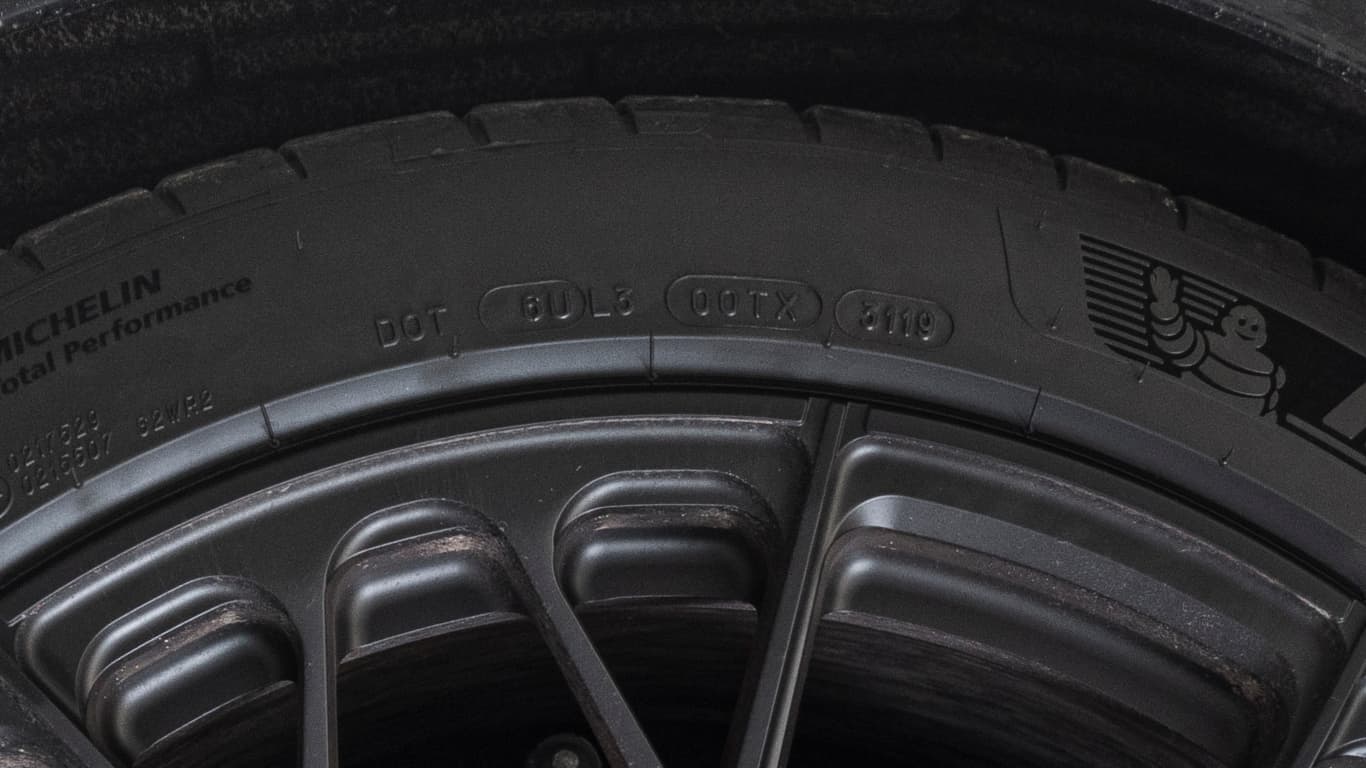
All tires sold in the U.S. are required to have a Department of Transportation (DOT) code molded into the sidewall. This code includes information about the manufacturer, tire size, and the week and year of manufacture.
You can find the DOT code on your tire by looking for the letters “DOT” followed by a series of numbers and letters. The last four digits of this code represent the week and year the tire was made. For example, a tire with the code DOT 6UL3 00TX 3119 was manufactured in the 31st week of 2019.
Even if you live outside the U.S., you should be able to find a set of standalone four digits on your tire’s sidewall. This is the manufacture date.
Consider the Tire’s Condition
Aside from checking the DOT code, you can also apply the good ol’ eye test. Check the overall condition of your tires and look for signs of significant wear or damage, such as cracks, bulges, and uneven tread wear. These are indicators your tires have reached the end of their useful lifespan and need to be replaced.
Keep Track of When You Purchased the Tires
Knowing when you purchased your tires can give you a rough estimate of their age. Following the average lifespan we mentioned earlier, you can expect to change them anywhere from four to six years.
This is also useful if the DOT code is no longer visible. Although, we should probably say that if your tire’s DOT code is not legible, it’s probably taken a severe beating.
Tire Care and Maintenance Tips: Extending Tire Lifespan
You can do several things to extend your tires’ lifespan and get the most value out of them. Here are the major ones.
Maintain the Correct Air Pressure
Maintaining the correct air pressure in your tires is crucial for several reasons. Properly inflated tires ensure even tread wear, improve fuel efficiency, and increase the tire lifespan.
You can check the air pressure in your tires with a tire pressure gauge and reference the value you get with the recommended one on the tire sidewall, owner’s manual, or door jamb label. You could also visit a tire technician or mechanic to get your tires checked.
Rotate Your Tires Regularly
Most cars have engines in the front, placing more weight on the front tires. As a result, they wear faster than the rear ones. One way to combat this is to replace your front wheels earlier than the back ones. However, you can also rotate your tires regularly to distribute the wear more evenly.
If you choose to go this route, consider rotating your tires every 5,000 to 8,000 miles. Of course, you can tweak this based on the type of tires you have and your driving habits.
Use the Correct Tires for Your Vehicle and Driving Needs
Using the right tires for your vehicle and driving needs can help extend their lifespan. In other words, consider using winter tires specifically designed to improve traction in cold and snowy conditions if you live in an area with harsh winter weather.
Similarly, use performance tires made to improve handling and grip at high speeds if you drive a performance vehicle.
Perform Regular Visual Inspections
Regularly inspecting your tires for signs of wear or damage can help you identify and address minor issues before they become serious. You can perform monthly inspections and increase the frequency if you notice any unusual changes in your tires.
Drive Carefully
As mentioned before, your driving habits impact your tires’ lifespan. Rapid acceleration and hard braking, for example, put extra strain on your tires and lead to faster tread wear—so does overloading your vehicle or towing heavy loads.
Be mindful of these factors and adjust your driving habits as needed to extend the lifespan of your tires.
When To Replace Your Tires
There are several signs that it may be time to replace your tires. Here are some things to look for:
Wear Bars
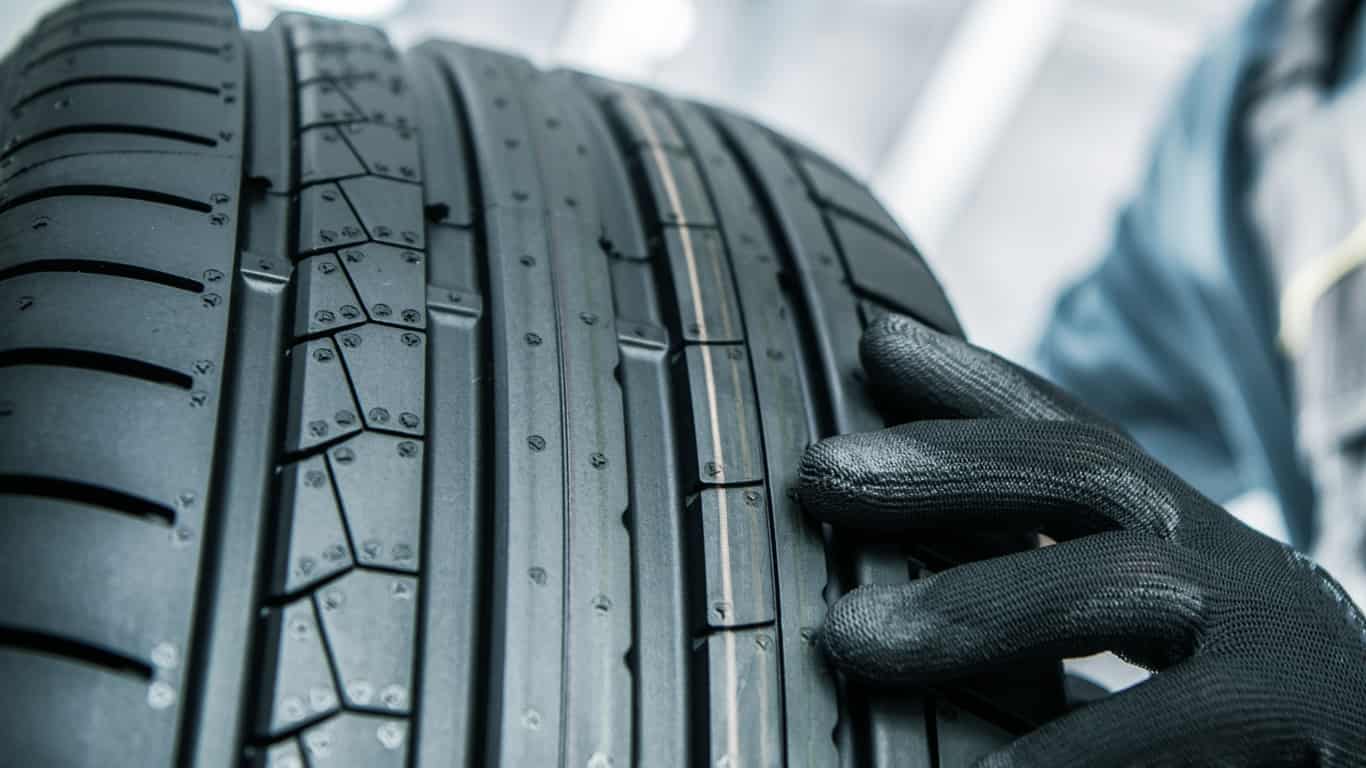
Tires have tread wear indicators (or wear bars) molded into them. When the tread has worn down to the same level as these bars, it’s time to replace the tire. You can find the wear bars by looking for small, raised bars of rubber located at regular intervals around the tire’s circumference.
Uneven Tread Wear
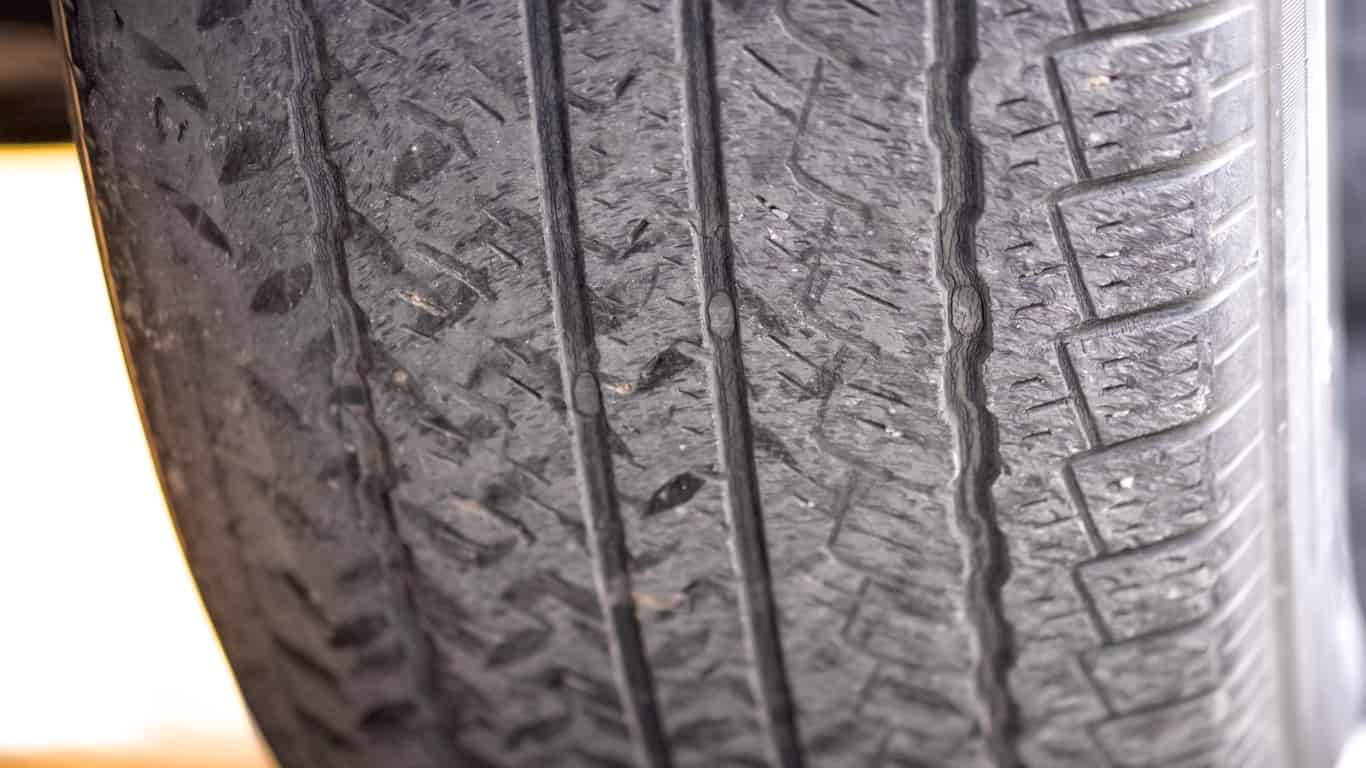
Uneven tread is a sign that your tires need replacement. It can be caused by improper inflation, alignment problems, or worn suspension components. If you notice your tire tread wearing down more quickly on one side, have them inspected and replaced if necessary, and probably get an alignment fix afterward.
Visible Damage
If you notice any visible damage to your tires, such as bulges, cracks, or cuts, it’s vital to have them inspected as soon as possible. Depending on the severity of the damage, the tires may need to be repaired or replaced.

Age
Tires have a limited lifespan and will eventually need to be replaced, even if they still have tread. The average lifespan of a tire is around 50,000 miles or five years, but this can vary depending on the specific type of tire and how it is used.
However, you should absolutely swap out your tires after 10 years, regardless of how much tread they have left. If you are unsure of the age of your tires, you can check the DOT code, which includes the week and year the tire was manufactured.
How Long Do Tires last—Maintenance Plays a Role
Tire lifespan is a significant aspect of vehicle safety and performance. The average tire lasts around 50,000 miles, but yours can vary depending on the type and how it’s used. By understanding these issues and taking steps to maintain your tires, you can ensure they remain in good condition and provide reliable performance for as long as possible.
If you do need to change your tires, you’ll need to know precisely what size to get. So, check out our guide to understand what all those tire numbers mean.
FAQs
How Long Do Tires Typically Last?
Tires typically last around 50,000 miles or five years, but this can vary depending on the specific type and how it is used.
How Often Should I Rotate My Tires?
The specific frequency for rotating your tires will depend on the type of tires you have and your driving habits. Generally, rotating your tires every 5,000 to 8,000 miles or so is a good idea.
What Factors Can Impact Tire Lifespan?
Several factors can impact tire lifespan, including tire type, driving conditions, vehicle alignment and suspension, tire inflation, and driving habits.
How Can I Extend the Lifespan of My Tires?
You can extend the lifespan of your tires by maintaining the correct air pressure, rotating them regularly, using the right options for your vehicle and driving needs, performing regular visual inspections, and driving carefully.
How Do I Know When It’s Time To Replace My Tires?
You can tell that it’s time to replace your tires by checking the wear bars, inspecting for uneven tread wear and visible damage, and calculating the age.
Is It Ok To Mix Different Types of Tires on My Vehicle?
It is generally not recommended to mix different types of tires on a vehicle, as this can cause issues with traction and handling.
Are All Tires Designed To Last the Same Amount of Time?
No, tires are not designed to last the same amount of time. The lifespan of a tire varies depending on the specific type and how it is used.
What Should I Do if I Notice Signs of Wear or Damage on My Tires?
If you notice any wear or damage on your tires, have them inspected as soon as possible. Depending on the severity of the issue, the tires may need to be replaced.
Can I Drive on My Tires After They’ve Reached the End of Their Useful Life?
It is generally not recommended to drive on tires after they have reached the end of their useful lifespan, as they may not provide reliable performance and could be unsafe.


